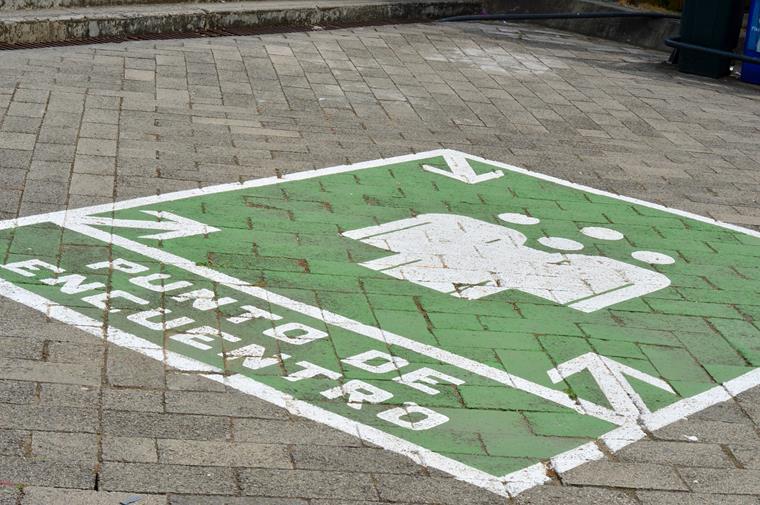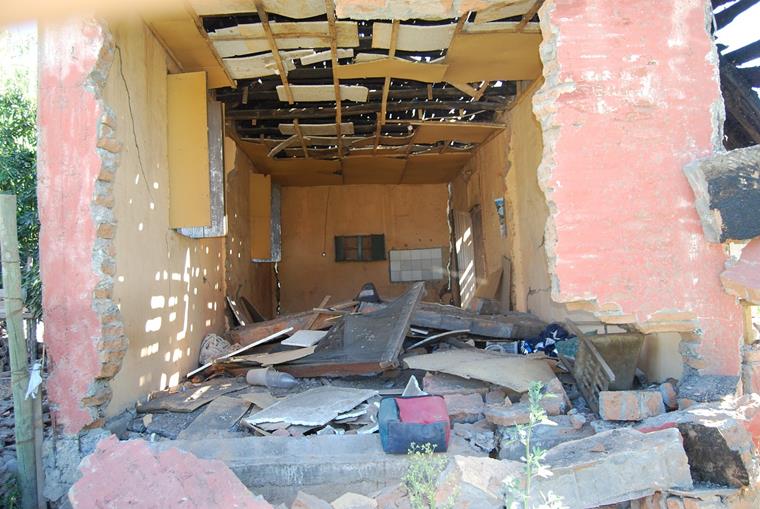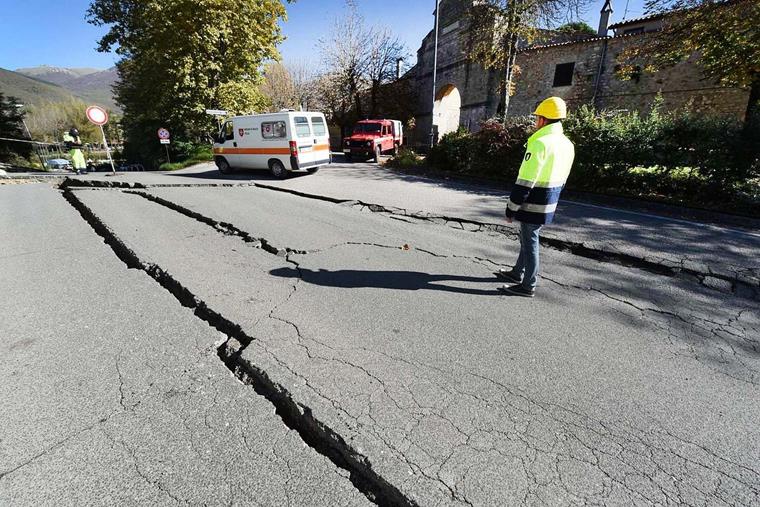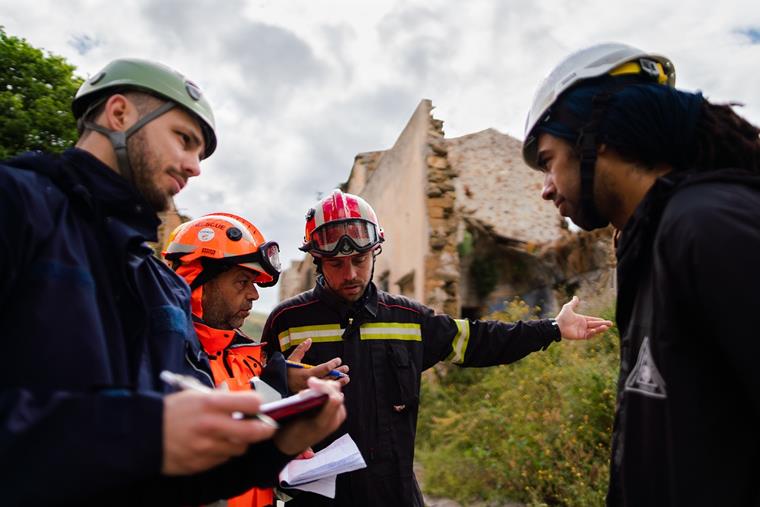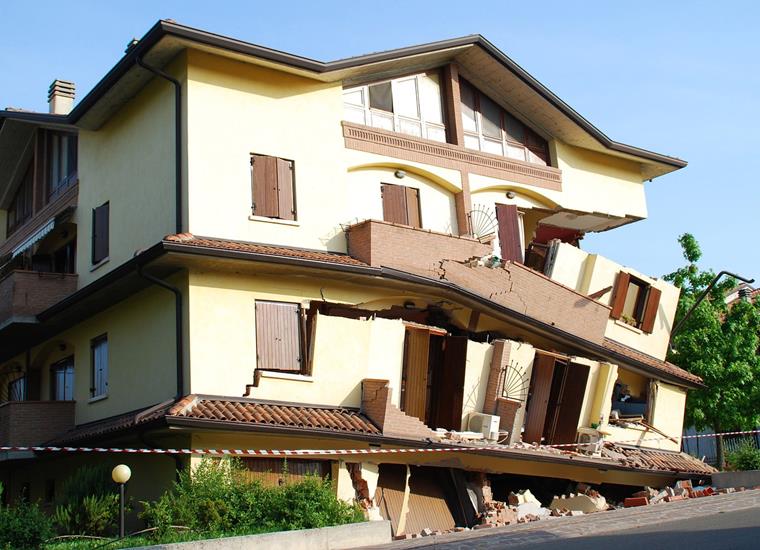Why do earthquakes occur?
Millions of years ago, there was only one large continent on the Earth. Due to movements in the Earth's interior, it gradually tore apart, creating individual plates that drifted away from each other on the liquid rock. This is how our continents arose as we know them today. Since our planet is known to be round, sooner or later these plates met again deep underground.
The impact of such huge rock layers releases a lot of energy and you can feel the effects of such force on the ground. The earth quakes, often for a few seconds or minutes, but that's enough to wreak havoc. Cracks appear in the landscape and the destruction does not stop at entire cities.
If an earthquake occurs, the strength of the quake is determined on the basis of a seismographic evaluation. There is a scale for this, which enables the event to be classified. This results in a value called the magnitude. The jump from one value to the next means a tenfold or even thirtyfold increase in the magnitude of the earthquake. So going from a magnitude of 8 to 9 corresponds to a quake ten times worse.
- Magnitude below 4.0: usually no damage
- Magnitude over 5.0: some major damage
- Magnitude over 7.0: widespread devastating damage in large areas
There are around 1,000 smaller earthquakes every day, but humans hardly notice them. The situation is different for larger events. We have mentioned one of the most famous examples of an earthquake in the 21st century.
Earthquake on Haiti in 2011
In 2011, a severe earthquake struck Haiti, killing hundreds of thousands. Haiti is one of the poorest regions in the world and is located directly on the border between the Caribbean and North American plates. Usually, the two plates slide past each other vertically, but as is so often the case, practice does not necessarily follow the theory.
For example, the Caribbean plate shifts to the east by about 20 mm per year and is compressed by the North American plate. In technical terms, this shift is called a fault. For 40 years, this section remained dangerously quiet – a clear warning sign. There have also been historical earthquakes that occurred here.
For about a minute and 13 km below the surface, it then happened: An earthquake with a magnitude of 7.0 shook the region. Only 25 km from the capital. Nine aftershocks followed. Large parts of buildings are destroyed, and entire slums slide off mountain slopes. Around 316,000 people die, 310,000 are injured, and almost 2 million of the 11 million people are homeless now. But how could a quake in a known seismic zone claim so many lives?
There were no preventive plans for such a case. The earthquake happened about an hour before dark and there was no electricity. Scarce infrastructure and a lack of medicines in the poorly equipped medical facilities, as well as an inadequate health system, led to violence and looting. These circumstances claimed more lives.
To date, the region has not recovered, despite financial aid. Corruption, poverty, and violence remain a deadly mixture that holds Haiti tight. How could it come so far, and can we, as civil engineers, ensure that the effects of such quakes are less severe?
Forms of Earthquakes
There are different earthquake forms. If volcanic activity occurs, earthquakes occur due to the movements in the Earth's interior. For example, Iceland often has to deal with this type of earthquake.
Most of the earthquakes on our planet are tectonic. In this case, tectonic plates meet, as was the case of the Haiti disaster. The release of energy when the Earth's crust shifts below sea level also creates a tsunami.
There are many cavities in the geological subsurface. If one of them collapses, a collapse earthquake may occur. In 2000 and 2009, something like this happened in Hamburg, where salt domes, that is, underground salt structures, collapsed.
How to Make Buildings Earthquake-Resistant
Earthquakes are natural phenomena that simply cannot be prevented. Even with today's technology, the prediction of earthquakes only works a few seconds before the event. Time enough, at best, to escape from a building to a large open space or under a door frame. So it only remains for us to ensure that our structures are as earthquake-resistant as possible.
Fortunately, we only have a few areas in Germany that are actually threatened by earthquakes. Feel free to check out our Geo-Zone Tool to see to what extent your region is one of these areas. If it is determined during building design that earthquakes with a certain strength would be possible, attention is paid to the ductility during the construction. This means that the buildings must be able to withstand deformations as a result of an earthquake of the respective strength without the structures failing.
Geo-Zone ToolFor example, soft floors supported only by columns, rather than walls, should be avoided. If a floor rests on supports only, it is too shaky for a building when the ground begins to move. A failure of the structure would be preprogrammed.
Furthermore, the longest possible supports should be used in order to avoid excessively high shear forces that would lead to shear fractures in case of emergency. Stiffness jumps, that is, abrupt transitions between components of different shapes, also significantly impair the stability of a building. Moreover, compact design methods are advantageous, with clear edges and without artful curved structures.
In the event of an earthquake, the vibrations cause the building to rotate around the mass center, which is usually the center of the ground plan. In an ideal case, the resistance center of the structure is also located here. Thus, symmetry can save a building. And most important: Better to have too much structural analysis than too little! If one structural element fails, the others should be able to cushion it accordingly.
That's just about planning. What else can make a building earthquake-resistant? Here, we throw the term "seismic isolation" into the space. In this case, a building is decoupled from the subsurface. How does this work? When the ground moves, seismic supports vibrate with it and absorb these movements. The quake is also not transferred to the building above the decoupling, or only a little. There are even shock absorbers for structures.
Conclusion: Building in Earthquake-Resistant Way
We can therefore state that the danger of earthquakes in the individual regions of the Earth can be classified quite well due to seismic records. This allows us to predict whether and to what extent a building needs to be built in an earthquake-resistant way at a certain location. We can at least protect our buildings from destruction by natural earthquakes – and thus also the lives of the people who are there.
It's really important to be creative when it comes to skyscrapers in places where earthquakes are a regular thing. Take the Taipei Financial Center, for example. It's the world's eleventh tallest building, also known as Taipei 101. It's located in Taiwan. It's right in the middle of a seismic zone. It also had a vibration damper that was pretty unique at the time. It's a really exciting thing.
It is to be hoped that at some point, our technology will be able to predict earthquakes reliably and in good time, so that as many as possible can get to safety in case of an emergency. The Dlubal structural analysis programs help to test and design the effects of earthquakes on a planned building model. In this way, the buildings calculated with our software are safer.
Thank you for your interest in this important topic. We'd love to have you back for the next episode of our podcast – we'll hear or read from each other!
